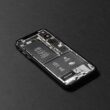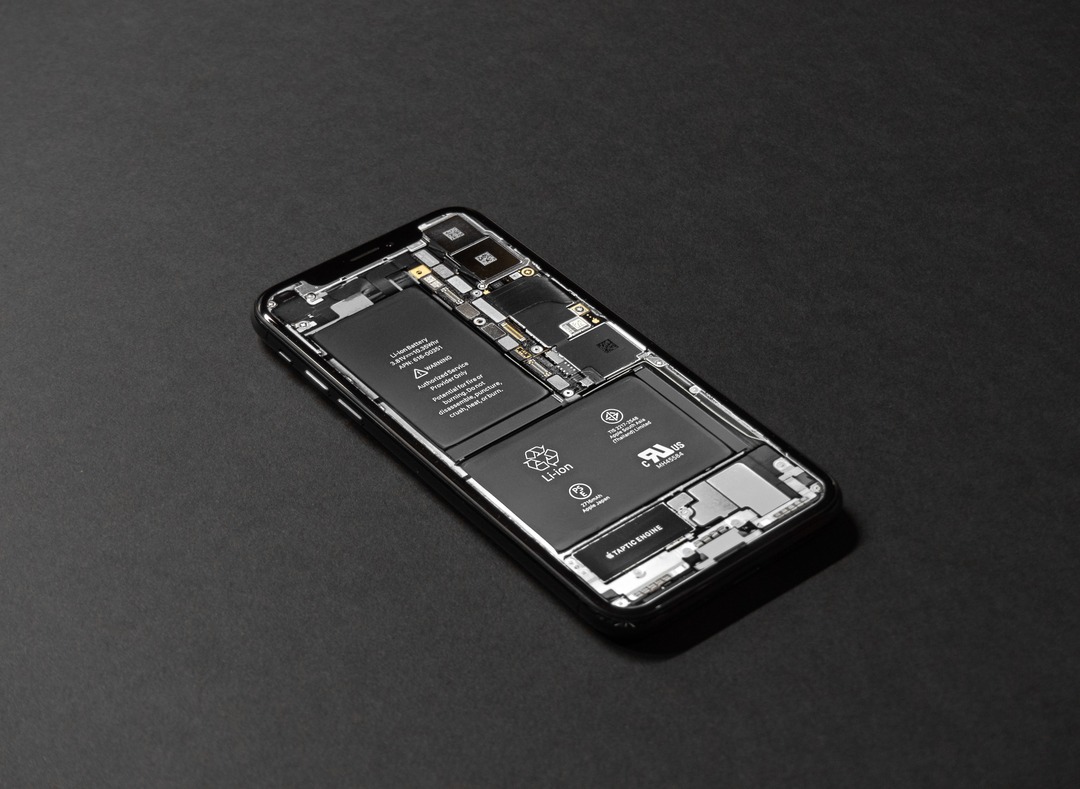I. Introduction
In our ever-connected world, the iPhone stands as a beacon of innovation and convenience. However, one crucial aspect that often dictates our mobile experience is the device’s battery life. For many iPhone users, the day’s success hinges on the longevity of their phone’s battery. Whether it’s for staying in touch with loved ones, navigating through busy city streets, or keeping entertained during long commutes, a reliable battery is indispensable.
Common concerns among iPhone users revolve around maintaining battery health and ensuring its longevity. Over time, batteries naturally degrade, but the way we use our iPhones can significantly influence how quickly this happens. Questions often arise about the best charging practices, the impact of software updates, and the mysterious world of background apps, all affecting battery performance. These worries are not just about convenience but also about ensuring our iPhones remain functional and efficient throughout their lifespan.
Recognizing these concerns, this blog post aims to demystify the complexities of iPhone battery health. Our goal is to equip you with actionable tips and strategies to maximize your iPhone’s battery life. From simple tweaks in settings to deeper insights into battery maintenance, we will guide you through a range of methods to enhance your daily iPhone experience. So, let’s embark on this journey towards smarter and longer-lasting iPhone usage.
II. Understanding iPhone Battery Health
What Does iPhone Battery Health Mean?
At its core, iPhone battery health refers to the capacity of your iPhone’s battery to hold a charge compared to when it was new. Batteries are consumable components that become less effective as they chemically age. This aging results in a diminished capacity to store charge, translating into shorter usage times between charges. Apple has integrated a feature in the iOS that allows users to check their battery’s maximum capacity and peak performance capability, providing a clear picture of the overall health of the battery.
Factors Affecting iPhone Battery Longevity
Several factors play a crucial role in determining the longevity of your iPhone’s battery:
- Charging Habits: Frequently draining the battery to 0% or overcharging it can speed up the aging process.
- Temperature Exposure: iPhones are sensitive to temperature extremes. Both hot and cold conditions can cause permanent battery damage, with heat being particularly harmful.
- Software Updates: Running outdated iOS software can lead to inefficiencies in battery usage, while certain updates might improve battery optimization.
- Usage Patterns: High consumption tasks, like gaming or using GPS services, can strain the battery more than lighter tasks like texting or reading.
The Importance of Monitoring Battery Health in iOS Settings
Apple’s iOS provides a built-in tool to monitor your iPhone’s battery health, located in the “Battery” section of the “Settings” app. This feature is essential for several reasons:
- Preventative Maintenance: Regularly checking your battery health can alert you to potential issues before they become serious problems.
- Informed Usage: Understanding your battery’s capacity helps in adjusting your usage habits and settings for optimal battery life.
- Making Decisions: The battery health information can guide decisions on whether to replace the battery or even upgrade to a new device, especially if the performance is significantly impacted.
By staying informed about your iPhone’s battery health and understanding the factors that affect its longevity, you can take proactive steps to maintain and extend the life of your device. This knowledge empowers iPhone users to get the most out of their devices, ensuring a reliable and efficient experience.
III. Tips for Optimizing iPhone Battery Usage
Optimizing your iPhone’s battery usage not only extends its daily life but also contributes to its overall health in the long run. Here are some key strategies to help you get the most out of your iPhone’s battery:
Adjust Screen Brightness and Auto-Lock Settings
One of the simplest yet most effective ways to save battery life is by adjusting your screen brightness and auto-lock settings. The brighter your screen, the more power it consumes. You can reduce brightness manually or enable “Auto-Brightness,” which automatically adjusts the screen brightness based on current lighting conditions. This option is found under “Settings” > “Accessibility” > “Display & Text Size.”
Similarly, shortening the auto-lock time — the time before your screen goes to sleep — can conserve significant battery life. You can adjust this in “Settings” > “Display & Brightness” > “Auto-Lock.” Setting it to 30 seconds or 1 minute can make a noticeable difference.
Manage Location Services and Background App Refresh
Location Services and Background App Refresh are two features that, while useful, can drain your battery if not managed properly.
- Location Services: This feature allows apps to use your location for various purposes, from navigation to location-based recommendations. However, it can be a major battery drain. To optimize, go to “Settings” > “Privacy” > “Location Services” and review which apps have access to your location. Consider disabling it for apps that don’t require constant location tracking.
- Background App Refresh: This feature lets apps update content in the background. To save battery, consider limiting its use. Go to “Settings” > “General” > “Background App Refresh” and select either “Wi-Fi” or “Off” for specific apps that don’t need to be constantly updated.
Update to the Latest iOS Version
Apple frequently releases iOS updates that can improve the efficiency and battery life of your iPhone. These updates often include advanced energy-saving technologies and bug fixes that can help your battery perform better. To check for updates, go to “Settings” > “General” > “Software Update.” If an update is available, it’s advisable to install it — not only for battery optimization but also for security and performance improvements.
Implementing these tips can significantly extend your iPhone’s battery life on a daily basis. By being mindful of settings that impact battery consumption, you can enjoy prolonged usage without the constant need to recharge.
IV. Best Practices for iPhone Battery Maintenance
Maintaining your iPhone’s battery health involves more than just careful usage; it also includes understanding and implementing proper charging techniques and environmental considerations. Let’s debunk some myths and focus on the best practices for iPhone battery maintenance.
Proper Charging Techniques: Myths vs. Facts
Myth: You need to completely drain your iPhone’s battery before recharging. Fact: Lithium-ion batteries, like those in iPhones, have no memory effect. This means they don’t need to be fully discharged before recharging. In fact, it’s better to charge your iPhone when it reaches around 20-30% battery level.
Myth: Charging your iPhone overnight damages the battery. Fact: Modern iPhones are designed to stop charging when they reach 100%, so leaving your iPhone plugged in overnight won’t directly harm the battery. However, it’s still good practice to avoid leaving it on the charger for extended periods to prevent potential overheating.
Myth: Using non-Apple chargers always harms your iPhone’s battery. Fact: While it’s best to use Apple-certified chargers, using third-party chargers that are certified and comply with safety standards should not harm your battery.
Temperature Considerations: The Effects of Extreme Temperatures
Your iPhone’s battery performs best in a temperature range of 16°C to 22°C (62°F to 72°F). Extreme temperatures, both hot and cold, can have a detrimental impact on battery life:
- Heat: Exposure to high temperatures can cause irreversible battery capacity loss. Therefore, it’s advisable to avoid leaving your iPhone in a hot car or in direct sunlight for extended periods.
- Cold: Low temperatures can temporarily decrease battery performance. Your iPhone might shut down in cold conditions, but this is a protective mechanism and usually reversible once the device is back in a warmer environment.
Avoiding Full Discharges: The Optimal Charge Range
Regularly letting your iPhone’s battery drain to 0% can lead to a shorter battery lifespan. It’s generally recommended to keep your iPhone’s battery charge between 30% and 80%. This range is considered optimal for extending the battery’s lifespan. While it’s not always practical to maintain this exact range, aiming for it can help in maintaining the health of your battery over time.
By following these best practices for charging and considering environmental factors, you can effectively maintain and extend the life of your iPhone’s battery, ensuring it remains reliable and efficient for as long as possible.
V. Advanced Techniques for Battery Saving
While basic settings adjustments can go a long way in extending your iPhone’s battery life, there are more advanced techniques that can provide an additional boost. These methods involve utilizing specific features of your iPhone and leveraging third-party tools designed for battery optimization.
Using Low Power Mode: Effective Utilization
Low Power Mode is a highly useful feature in iOS that reduces overall power consumption. When enabled, it automatically adjusts several settings, including reducing screen brightness, minimizing system animations, and disabling background app refresh. Here’s how and when to use it effectively:
- When to Use: Activate Low Power Mode when your battery hits 20% to significantly extend its life. It can also be used preemptively if you know you’ll be away from a charger for an extended period.
- How to Activate: Go to “Settings” > “Battery” and toggle on Low Power Mode. Alternatively, you can add it to the Control Center for quick access by going to “Settings” > “Control Center” > “Customize Controls.”
Controlling Notifications and Fetch Email Settings
Excessive notifications and frequent email fetching can drain your battery more than you might expect. Here’s how to manage them:
- Notifications: Go to “Settings” > “Notifications” and review which apps are allowed to send you push notifications. Disable notifications for apps that aren’t essential. This reduces the frequency at which your phone wakes up, saving battery life.
- Fetch Email Settings: If your email is set to “Push,” your phone constantly checks for new emails, using more battery. Consider changing this to “Fetch” at specific intervals. Go to “Settings” > “Mail” > “Accounts” > “Fetch New Data” and select a less frequent fetch schedule or even manually fetch.
Battery Saving Apps and Tools: Third-Party Options
There are various third-party apps and tools available that can help manage and optimize your iPhone’s battery life. These apps provide detailed insights into which apps are consuming the most power and offer suggestions for optimization. Some popular options include:
- Battery Life Doctor: This app offers a detailed analysis of your battery’s health and usage.
- Battery Saver: It provides recommendations for battery optimization and identifies power-hungry apps.
- CoconutBattery (for Mac): While not a mobile app, CoconutBattery can provide detailed information about your iPhone’s battery when connected to a Mac.
It’s important to note that while these apps can offer valuable insights, the best battery savings often come from manually managing your device’s settings and usage patterns.
By adopting these advanced battery-saving techniques, you can take your iPhone’s battery optimization to the next level, ensuring that your device keeps up with your lifestyle without constant charging needs.
VI. Troubleshooting Poor iPhone Battery Performance
Even with meticulous care and optimized settings, some iPhones may still experience poor battery performance. Identifying and addressing common battery issues is crucial in these cases. Additionally, understanding when to seek professional help can save you both time and frustration.
Identifying and Addressing Common Battery Issues
If you notice a sudden drop in battery performance, consider the following steps:
- Restart Your iPhone: Sometimes, a simple restart can fix minor software glitches that might be draining the battery.
- Check for Software Updates: Ensure your iPhone is running the latest version of iOS, as updates often include bug fixes and improvements for battery performance.
- Analyze Battery Usage: Go to “Settings” > “Battery” to see a breakdown of battery usage by app. This can help identify if a specific app is draining your battery excessively.
- Reset Settings: If the problem persists, try resetting all settings. This won’t delete your data but will reset system settings to their defaults. Go to “Settings” > “General” > “Reset” > “Reset All Settings.”
When to Seek Professional Help or Consider Battery Replacement
There are certain situations where professional intervention or a battery replacement might be necessary:
- Battery Health Below 80%: If your iPhone’s maximum battery capacity is below 80%, it might be time to replace the battery.
- Unexpected Shutdowns: If your iPhone frequently shuts down without warning, it might indicate a battery issue that requires professional attention.
- Swollen Battery: A swollen battery, often indicated by a bulging screen or case, is a serious issue and should be addressed immediately by a professional.
- No Improvement After Troubleshooting: If none of the above steps improve battery performance, it’s advisable to contact Apple Support or visit an authorized Apple service provider.
Remember, battery issues can sometimes be symptomatic of more complex internal problems. Therefore, if your iPhone is still under warranty or covered by AppleCare+, it’s best to consult with Apple for the most reliable advice and service options.
By effectively troubleshooting poor iPhone battery performance and understanding when to seek professional help, you can ensure the longevity and optimal functioning of your iPhone.
VII. Extending Battery Life for New iPhones
For those who have recently purchased a new iPhone, ensuring the longevity of your device’s battery starts from day one. Adopting the right habits and settings from the outset can significantly extend your iPhone’s battery life and efficiency over time.
Specific Tips for New iPhone Users
- Initial Charge Cycle: When you first get your iPhone, it’s a good idea to use it until the battery is below 20% and then charge it to 100%. This initial cycle helps calibrate the battery indicator.
- Update iOS: Before you start using your new iPhone extensively, ensure it’s updated to the latest version of iOS. This can be done through “Settings” > “General” > “Software Update.”
- Optimize Settings: Adjust settings that affect battery life from the start. This includes setting the Auto-Lock to a shorter time, reducing screen brightness, and enabling Auto-Brightness.
- Limit Location Services: Go to “Settings” > “Privacy” > “Location Services” and disable location access for apps where it’s not necessary.
- Configure Mail Fetch Settings: Instead of having your email on ‘Push’, set it to ‘Fetch’ manually or at longer intervals to save battery.
Setting Up Your iPhone for Optimal Battery Life
- Enable Optimized Battery Charging: This feature learns your charging habits and helps reduce battery aging. It can be activated under “Settings” > “Battery” > “Battery Health.”
- Review Background App Refresh Settings: Limit this feature to essential apps only. Navigate to “Settings” > “General” > “Background App Refresh” and make your selections.
- Monitor Battery Usage: Regularly check which apps are consuming the most battery and adjust your usage accordingly. This can be done under “Settings” > “Battery.”
- Avoid Extreme Temperatures: Be mindful of where you store and use your iPhone. Extreme cold or heat can adversely affect battery health.
By following these tips, new iPhone users can set a strong foundation for maintaining their device’s battery health. Remember, the habits you form during the initial days of using your iPhone can have long-term impacts on its battery life and overall performance.
Conclusion
In this comprehensive guide, we’ve explored various strategies and best practices to maximize and maintain your iPhone’s battery life. From understanding the nuances of iPhone battery health to implementing advanced battery-saving techniques, each section has provided actionable insights to enhance your iPhone’s performance.
Key Points Recap:
- iPhone Battery Health: Monitoring and understanding battery health is crucial.
- Optimizing Settings: Adjusting screen brightness, auto-lock, location services, and background app refresh can significantly save battery life.
- Charging Practices: Debunked myths about charging and emphasized the importance of proper charging habits and temperature considerations.
- Advanced Techniques: Utilizing Low Power Mode, managing notifications, and exploring third-party battery-saving apps.
- Troubleshooting: Steps to take when experiencing poor battery performance and understanding when to seek professional help.
- For New iPhones: Initial steps and settings adjustments to ensure long-term battery health.
We encourage you to implement these strategies to not only extend your iPhone’s battery life but also to enhance its overall efficiency and longevity. Each small adjustment can lead to noticeable improvements in your daily usage.
Moreover, we invite you to share your experiences in the comments below. Have you tried any of these tips? Did you notice a difference in your iPhone’s battery performance? Or perhaps you have additional tips and insights to share with our community. Your contributions can help enrich the knowledge and experience of all iPhone users.
Remember, technology is constantly evolving, and so are the ways we can optimize it. Stay curious, stay informed, and let’s continue to make the most out of our devices!




